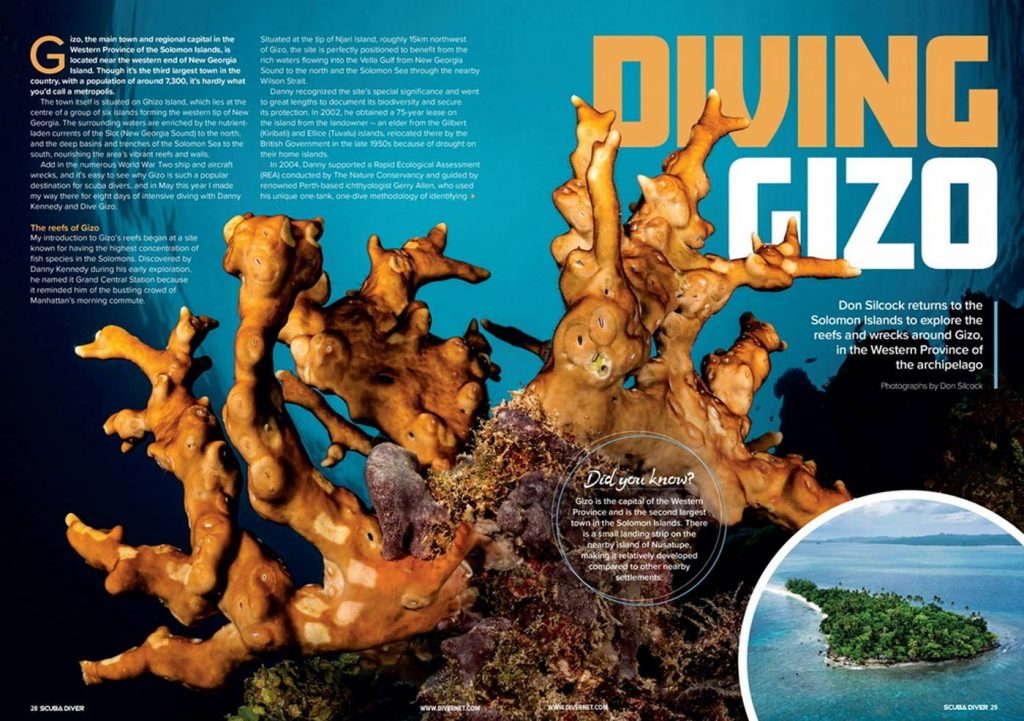Diving Gizo… The main town and regional capital of the Solomon Islands’ Western Province, Gizo is located near the western tip of New Georgia Island.
Though it’s the third largest town in the country, with a population of just over 7,000, it’s far from a bustling metropolis.
Situated on Ghizo Island, Gizo sits at the centre of a cluster of six islands that form the western tip of New Georgia.
The surrounding waters are enriched by the nutrient-laden currents of New Georgia Sound to the north, and the deep basins of the Solomon Sea to the south.
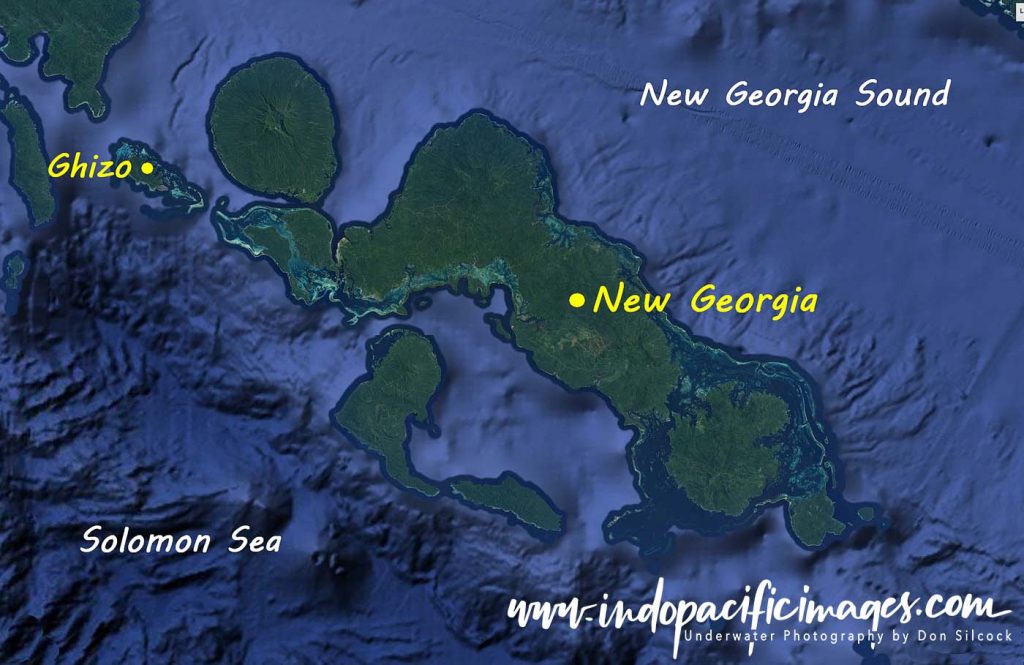
These converging flows nourish a remarkable variety of marine life, fuelling Gizo’s colourful reefs and coral walls. Add to that the many WWII ship and aircraft wrecks, and it’s easy to see why diving Gizo ranks high among the best experiences in the Solomon Islands.
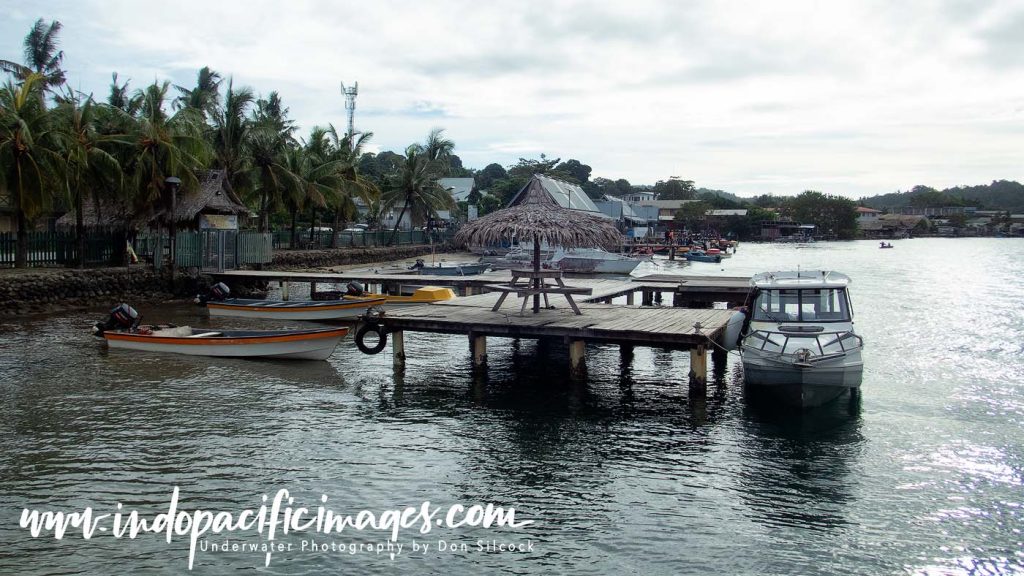
Diving Gizo – The Reefs…
Grand Central Station: My introduction to Gizo’s reefs began at a site famous for having one of the highest concentrations of fish species anywhere in the Solomon Islands — Grand Central.
Discovered by Danny Kennedy of Dive Gizo during his early explorations, he named it after Manhattan’s iconic terminal because the frenetic movement and the density of fish life reminded him of rush hour in New Yprk City.
Located at the tip of Njari Island, about 15km to the northwest of Gizo, the site is perfectly positioned in the rich water flows between New Georgia Sound and the Solomon Sea through nearby Wilson Strait.
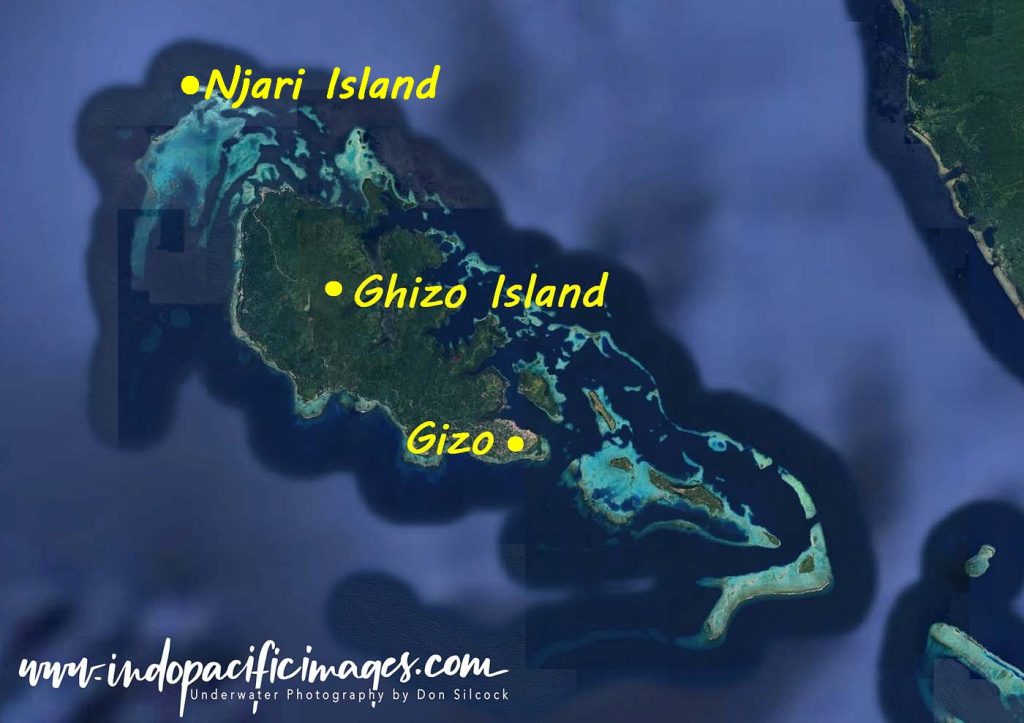
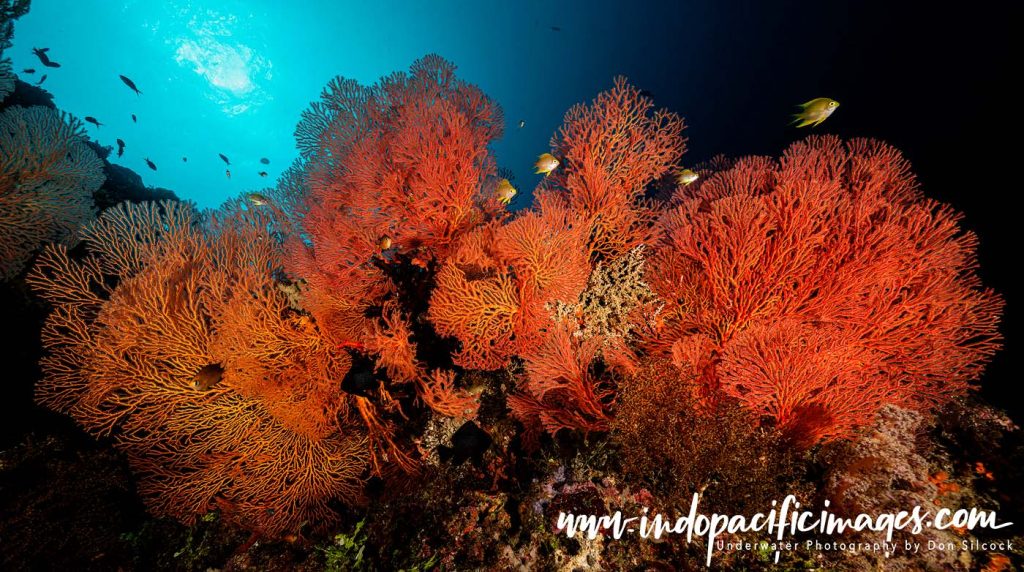
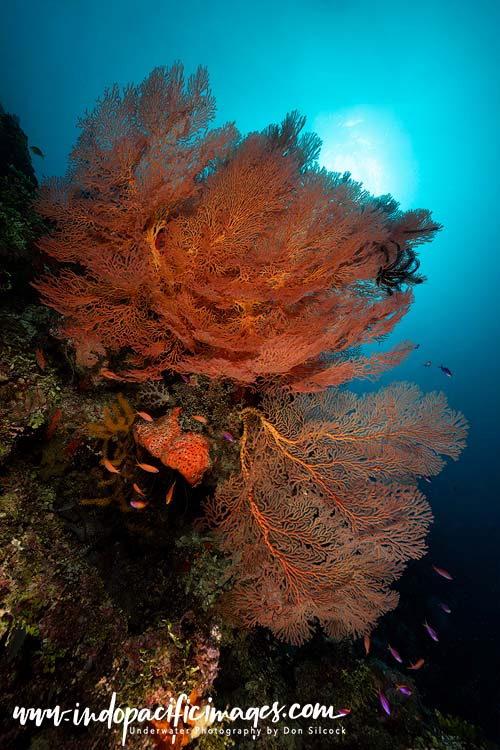
Recognising the ecological significance of the site, Danny went to great lengths to protect it. In 2002, he obtained a 75-year lease on Njari Island from the local landowner — a descendant of families from the Gilbert (Kiribati) and Ellice (Tuvalu) Islands, who were resettled there by the British Government in the late 1950s.
Two years later, he supported a Rapid Ecological Assessment (REA) conducted by The Nature Conservancy, led by renowned Perth-based ichthyologist Dr. Gerry Allen. Using his unique one-tank, one-dive methodology to identify key species.
Allen’s survey estimated an astonishing 279 fish species at Grand Central — earning it the distinction of the fourth-highest fish count in the world among surveyed dive sites.
Tragically, Grand Central suffered heavy damage in April 2007 when a devastating tsunami hit Ghizo Island. Waves up to 12 metres high killed at least 55 people and destroyed much of Gizo, including 80% of Dive Gizo’s assets. Undeterred, Danny and his wife Kerrie rebuilt from scratch, initiating coral restoration work around Njari Island and continuing to protect it from destructive fishing practices.
Seventeen years later, the results are striking. While it may never fully match its pre-tsunami splendour, Grand Central remains one of the most vibrant and diverse reef sites in the Solomon Islands. And an essential dive for anyone exploring Gizo.
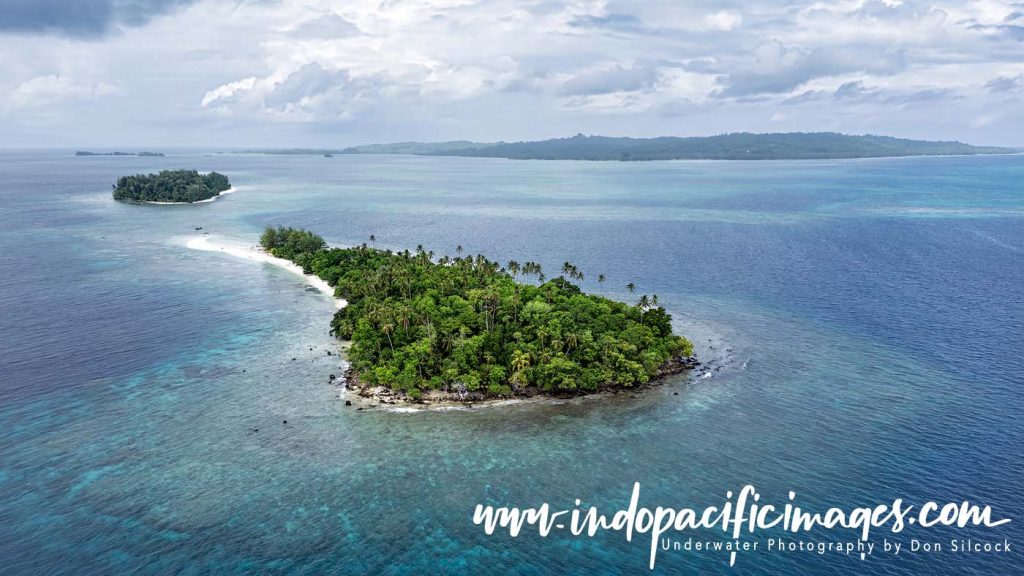
Beyond Grand Central, Gizo offers numerous other reef sites — typically 14 to 16 in regular rotation — mostly to the east and southeast, all within 20–30 minutes by boat from Dive Gizo. During my stay, site selection each day was based on tides and currents to ensure the best conditions. Among the many sites I explored, two stood out in particular:
Secret Spot: — a lush coral slope draped in sea fans and long, colourful sea whips, alive with anthias, fusiliers, and the occasional cruising reef shark.
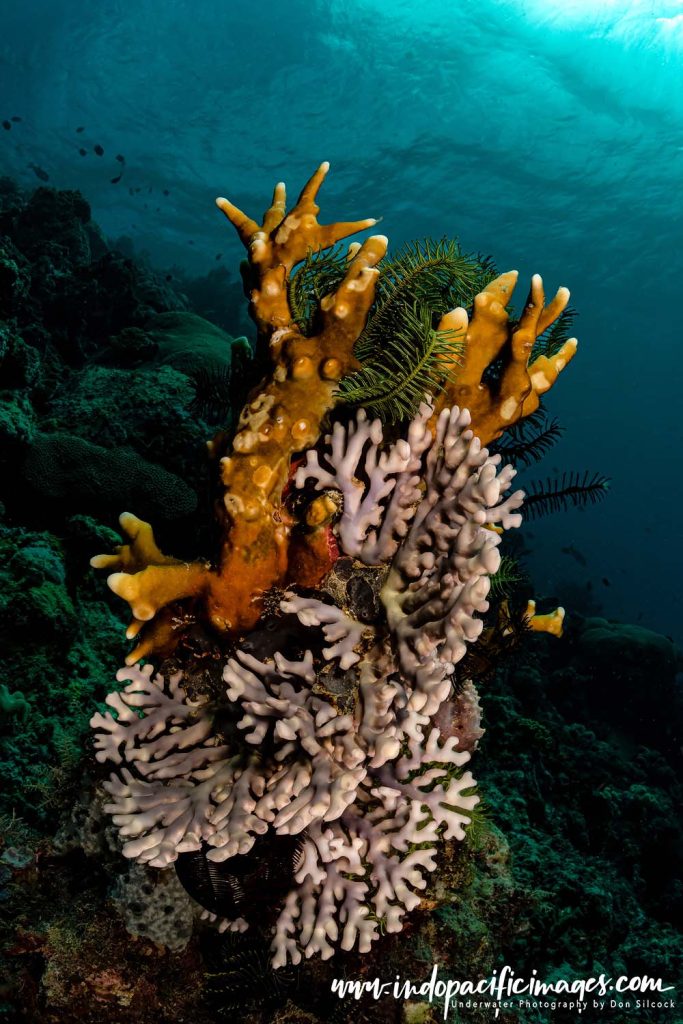
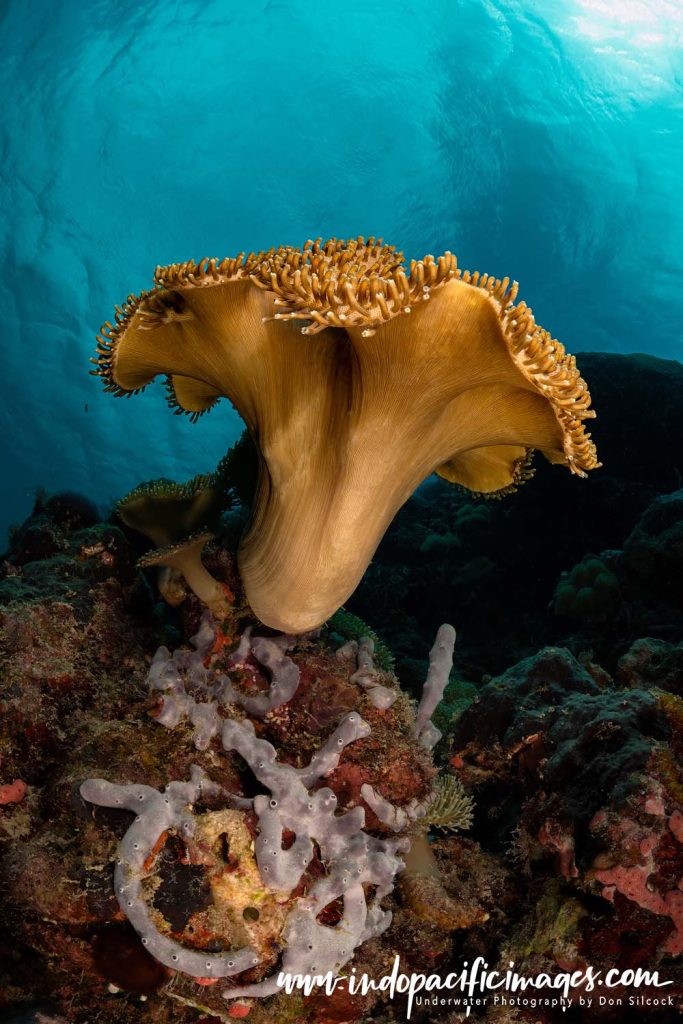
The Gap: An exhilarating drift dive along the outer wall of Naru Island, teeming with big-eyed trevally, barracuda, and grey reef sharks, before ending peacefully inside the calm waters of Gizo Lagoon.
These sites — and many others yet to be explored — demonstrate just how varied diving in Gizo can be. From gentle coral gardens to fast-flowing walls filled with life, there’s something here for every kind of diver.
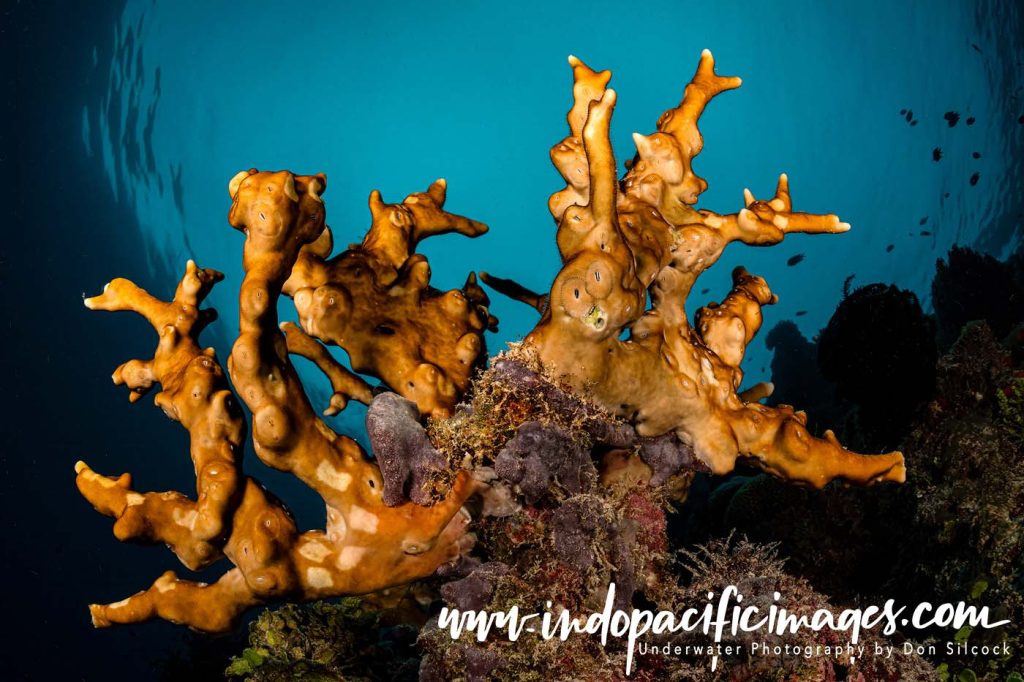
Diving Gizo – The Wrecks…
Toa Maru: While Gizo’s reefs are spectacular, its wrecks are legendary. The crown jewel is the Toa Maru II, the largest and arguably most impressive recreational wreck dive in the entire Solomon Islands.
This 140-metre transport vessel was launched in Nagasaki in December 1938 and entered Japanese naval service in 1941. It was heavily involved in transporting troops and supplies across the Pacific during WWII.
In late January 1943, while carrying cargo to Japanese forces near Gizo, the Toa Maru was spotted by Allied Coastwatchers and subsequently attacked by 12 Douglas Dauntless bombers launched from Henderson Field on Guadalcanal.
Badly damaged, the ship was run aground on the northern side of Sepo Kokiti Island, roughly 7km north of Gizo township, where it eventually sank.
Today, it rests on its starboard side, bow in just 7m and stern down around 37m, so perfect for multi-level exploration. Though stripped of valuable metals like its propeller during salvage operations in the 1960s and 70s, the wreck remains largely intact and now hosts a thriving artificial reef.
Ironically, the salvage work opened up much of the interior, making penetration dives safer.
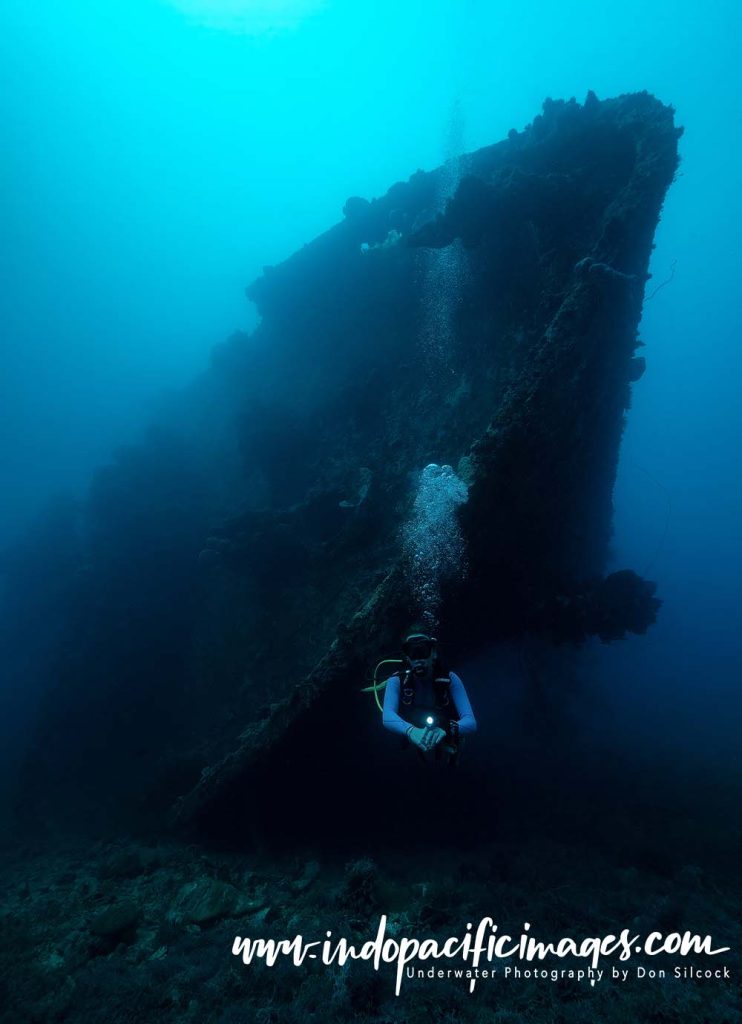
Highlights include an upside-down two-man tank sitting at the entrance to Hold #2, with its turret and gun barrel still clearly visible. Inside Holds #2 and #3, Dive Gizo guides keep a fascinating collection of artifacts salvaged from the wreck – medicine ampoules, bottles of pills, and other remnants of the ship’s wartime cargo – which they reveal to divers during guided tours.
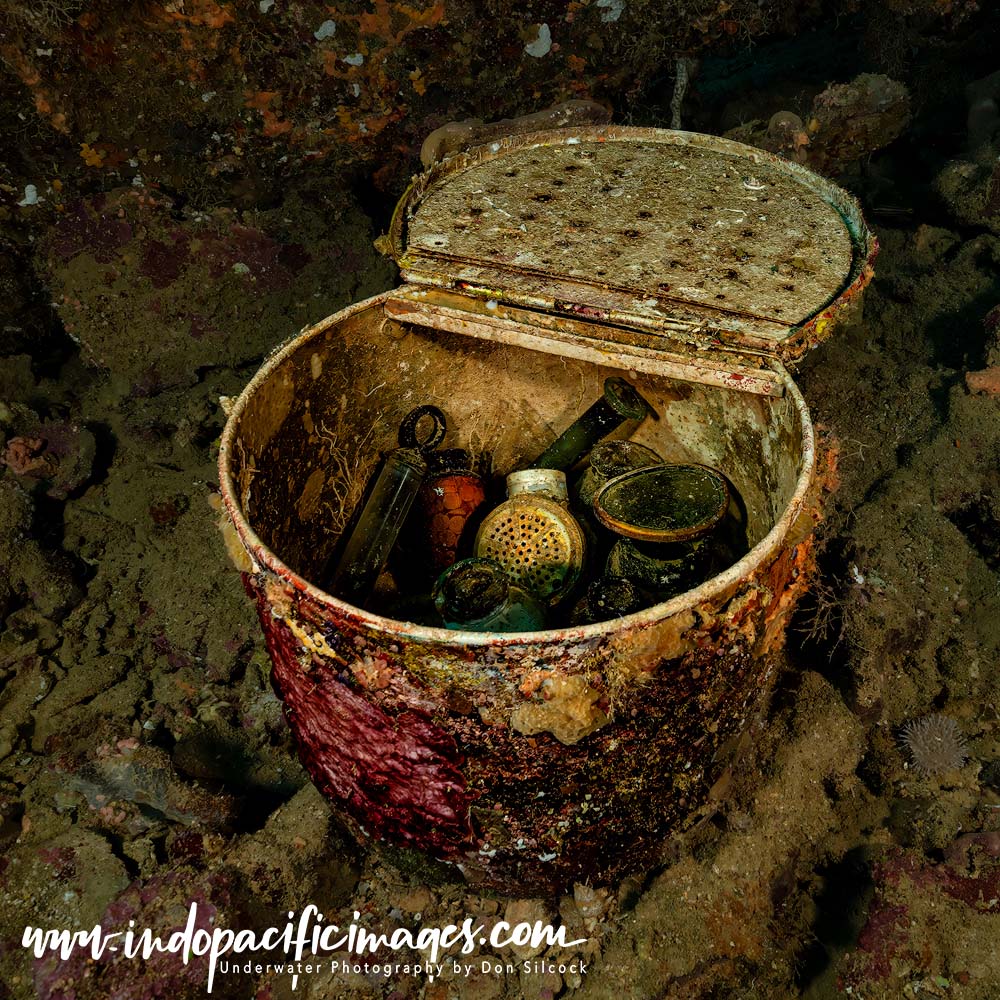
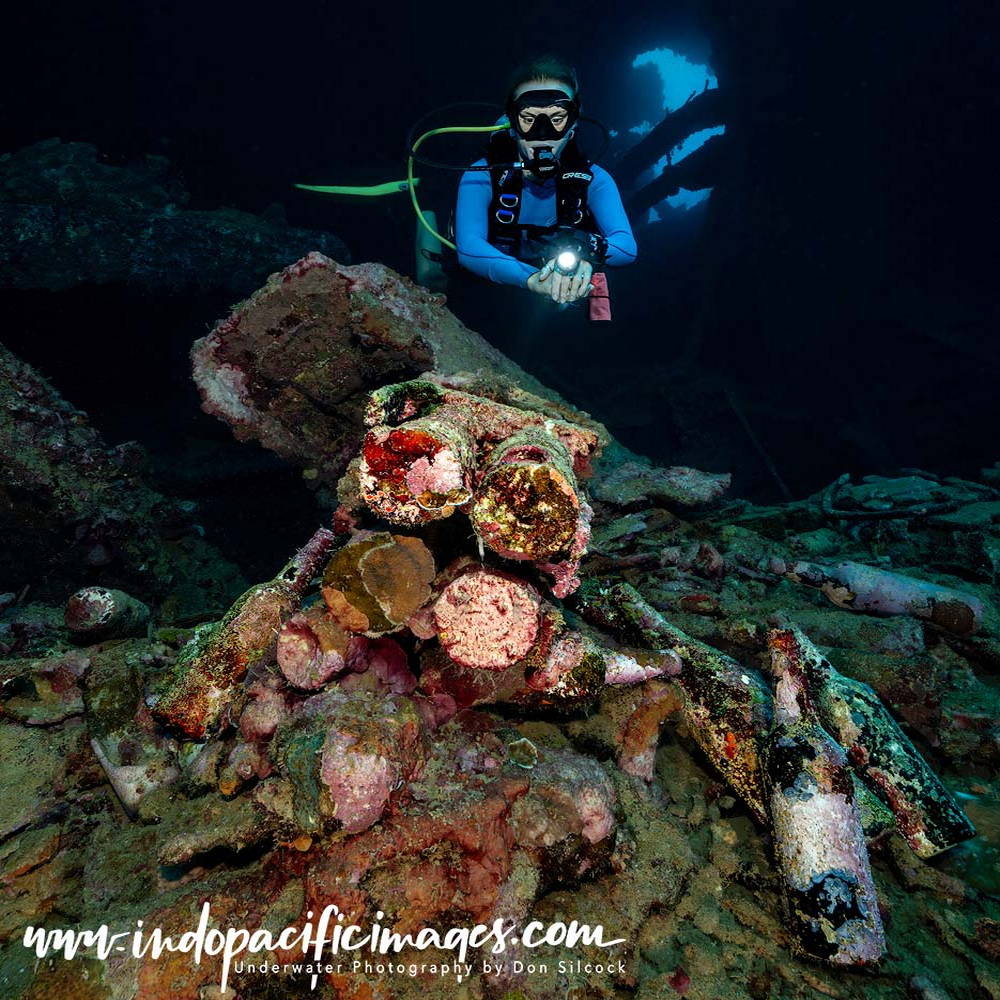
Grumman Hellcat Fighter: Another must-see Gizo wreck is the Grumman Hellcat fighter — a remarkably intact WWII aircraft sitting upright in just 12m of water. Discovered by Danny Kennedy in 1985, the plane was reportedly shot down by friendly fire in September 1943.
The shallow depth and excellent natural light make it ideal for underwater photography. The cockpit is open, the fuselage intact, and the starboard wing partially buried in coral, creating an atmospheric and photogenic setting.
The story behind the wreck is that the pilot, Lieutenant Dick Moore, survived the crash and was rescued by local islanders. He was taken to a nearby island, where an Australian Coastwatcher arranged for his evacuation to Munda and later back to Guadalcanal.
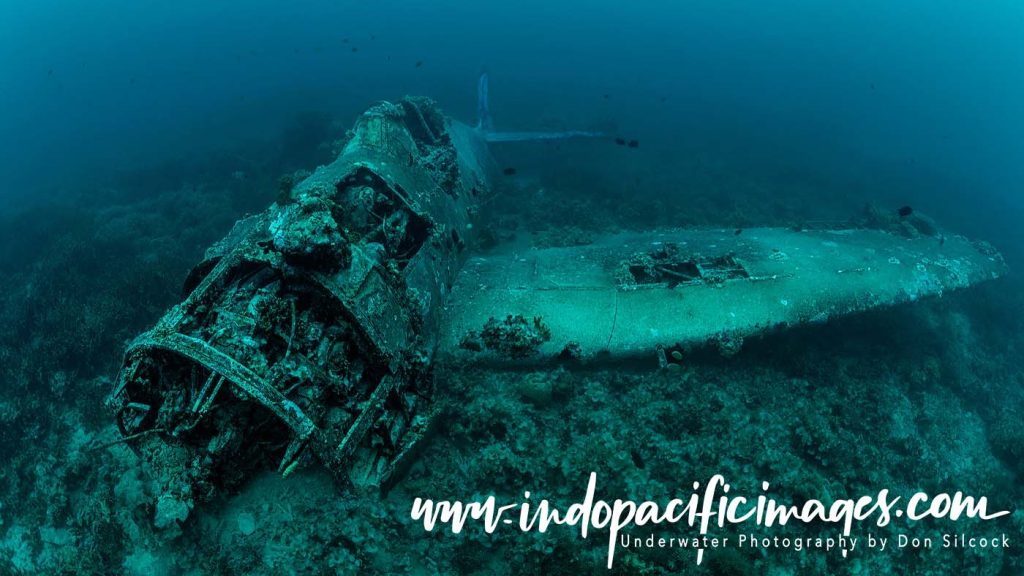
The Gizo Zero: Not far from Gizo Harbour lies a less pristine but still intriguing relic. A Japanese Zero fighter resting in 9m of somewhat murky water near the main market. Surrounded by sand, coral rubble, and the detritus of modern life (including the numerous beer cans…), despite the visibility, it’s worth a dive for the historical connection alone.
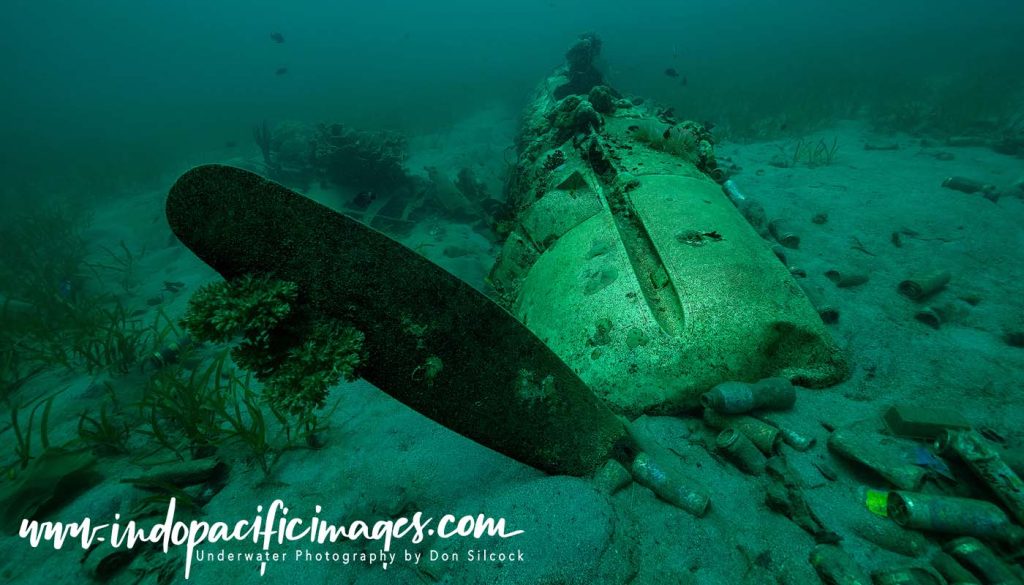
Danny Kennedy – The Man Behind Dive Gizo
No account of diving Gizo would be complete without mention of Danny Kennedy, who has become synonymous with both the place and its underwater discovery.
Originally from Florida, Danny first arrived in the Solomon Islands in 1985 as a backpacker looking for off-the-grid adventure. When he reached Gizo and made his first dives, he knew he had found home.
Soon after, he founded Dive Gizo, one of the country’s very first dive operations – and nearly four decades later, it’s still going strong. Together with his wife Kerrie, Danny has weathered everything from civil unrest and natural disasters to global crises and pandemics.
Along the way, he discovered almost all of Gizo’s dive sites and wrecks, led the conservation initiative for Njari Island, became a Solomon Islands citizen, and even served three terms in the Western Provincial Assembly.
When asked how he managed it all, Danny just smiles: “You need to understand, I’m of Irish-German descent and very stubborn. I don’t give up.”
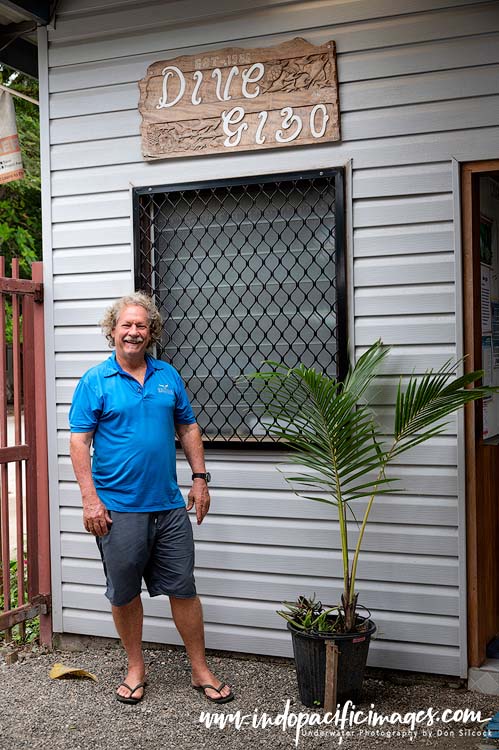
Diving Gizo Scuba Diver Article
Scuba Diver ANZ recently published a five-page article of mine on Diving Gizo and you can use the link to download a copy.
